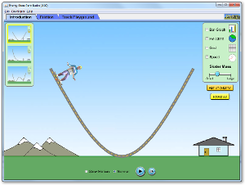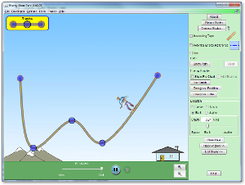|
Springs >>
|
4.1 - Work and Power
Objectives:
- To know and understand the concept of work done and how it relates to the concept of energy.
- To understand that power is the rate of doing work and that it is measured in Watts.
Mechanical WORK is the way that we quantify the amount of EFFORT needed to accomplish a task. ENERGY is defined as the ability to do work. If a job requires \(40 \,\text{J}\) of work, we must have a minimum of \(40 \,\text{J}\) of energy to achieve it. It was quickly realised that mechanical effort was the product of how hard you need to push something and how far you pushed it.
\[W = F\Delta x\]
The unit of work is the joule, named after James Prescott Joule who was an english brewer who first realised the link between mechanical work and heat. It is defined as \(1.0\,\text{N}\) of force applied over \(1.0\,\text{m}\) of displacement. Note that work can be positive or negative depending on which object is doing the work and which is having work done to it. This subtlety becomes very important later!
More exactly, the work done is the area under a force-distance graph. If the force is constant, then the above equation is valid. However, if the force is a variable, then we either need calculus or simple geometry to determine the work done. This is particularly the case for the work done by springs.
\[W = F\Delta x\]
The unit of work is the joule, named after James Prescott Joule who was an english brewer who first realised the link between mechanical work and heat. It is defined as \(1.0\,\text{N}\) of force applied over \(1.0\,\text{m}\) of displacement. Note that work can be positive or negative depending on which object is doing the work and which is having work done to it. This subtlety becomes very important later!
More exactly, the work done is the area under a force-distance graph. If the force is constant, then the above equation is valid. However, if the force is a variable, then we either need calculus or simple geometry to determine the work done. This is particularly the case for the work done by springs.
Power is the rate of doing work. It adds the time dependency to the situation. If two machines are doing the same task, the one that does it quicker is the more powerful machine. This true for engines and boats as well as computers or phones!
\[P=\frac{W}{t}\]
\[P=\frac{W}{t}\]
Springs >>

